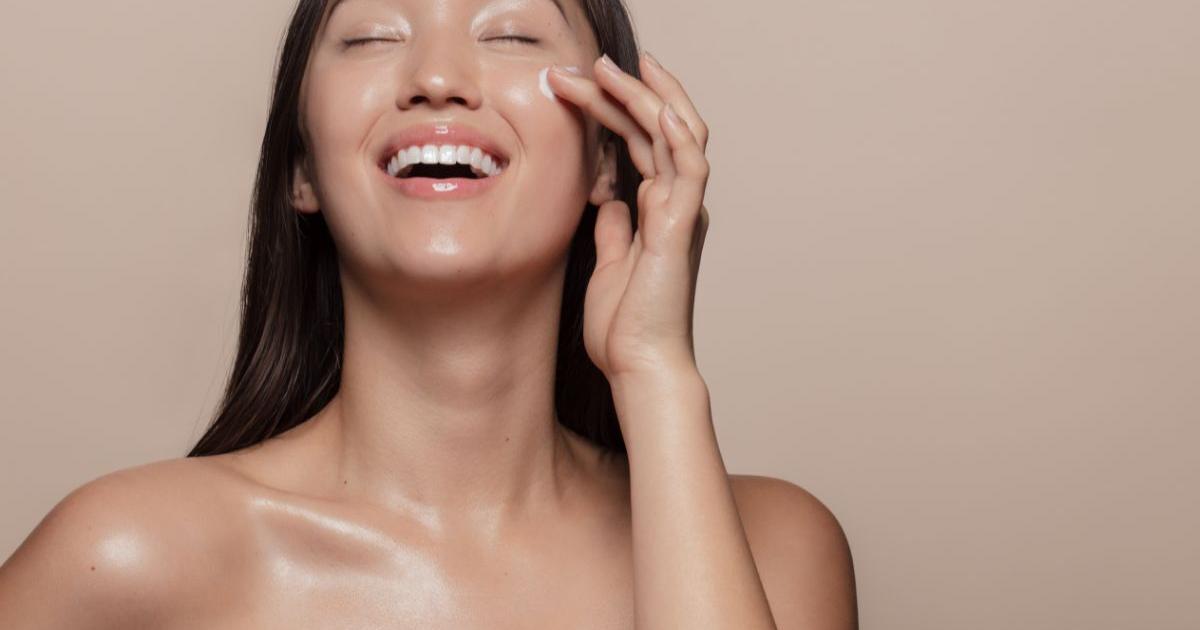Emily sohn
09/10/2021 11:36
Clarín.com
The New York Times International Weekly
Updated 09/10/2021 11:36
As heat waves lengthen beach time for many in the United States, you may have suffered from a sunburn.
And maybe you went to the pharmacy to buy a bottle of aloe to relieve it.
The aloe plant (also called
Aloe barbadensis
) is a cactus-like succulent that grows in hot, dry places.
Aloe vera has always been considered very useful for dermal use
For thousands of years, people have extracted the gel from its long, pointed leaves and used it as an ointment for various ailments, such as burns, scrapes, skin sores and other injuries.
The gel, which is primarily water, contains dozens of
vitamins, enzymes, amino acids,
and other compounds that can have various medicinal effects.
But while the global market for aloe vera gel reached about $ 625 million in 2020 and is expected to grow in the coming years, the remedies found in pharmacies have had their share of controversy.
In July, tests revealed that some CVS-brand aloe products were contaminated with
benzene
, a carcinogenic substance.
And previous tests found that some aloe products, found in retail stores and online, did not contain any aloe.
This, coupled with little solid information on the effectiveness of aloe in relieving burns, as well as little federal regulation on the content of over-the-counter products, has led some to wonder if they should look it up.
This is what we know.
Does aloe help with sunburn?
It may be, but the tests are spotty.
On
2012, Oliver Grundmann, a pharmaceutical chemist at the University of Florida College of Pharmacy, conducted a review of
18 clinical trials
on the use of aloe for a variety of conditions - burns, genital herpes, dandruff, psoriasis - and found some evidence that it might have
anti-inflammatory effects
when used on a sunburn.
In a randomized trial of 40 people published in 2008, for example, researchers exposed participants' lower backs to ultraviolet rays and treated the resulting redness with four different substances: a 97.5 percent aloe gel, a 1 percent hydrocortisone gel, a 1 percent hydrocortisone cream, and a placebo gel (without anything).
After 48 hours under a bandage, aloe gel appeared to be more effective in reducing skin redness than hydrocortisone gel, but less effective than hydrocortisone cream (which stays on the skin longer and is easier to absorb than a gel).
Other studies have found that people with first and second degree burns can heal faster with aloe than with other types of treatments such as topical antibiotics.
And although the animals are not human, some studies with rodents have shown promising results.
In one published in June, researchers used a hot iron rod to induce second-degree burns in a small area of the back of
anesthetized
rats
and found that, compared to stem cell injections, aloe vera gel shortened the time of healing of burns.
Another study with rats from 2014 showed a
reduction
in inflammation with an aloe treatment in UV-induced burns.
However, not all studies have shown benefits.
A small one from 2005, for example, found that applying aloe cream to UV-induced burns in 20 people twice a day for three weeks
was not effective
in healing the burn.
Aloe falls into the category of treatments that have some evidence to support them, but not much, said Laura Ferris, a dermatologist at the University of Pittsburgh and a member of the American Academy of Dermatology.
"I think it's fair to recommend it with the caveat that it will help cool the skin and there is a possibility that it will speed healing," he said.
"But we don't have the kind of large, rigorous studies that we rely on in medicine to be able to quantify benefit or recommend a specific product."
What does this say about the products in pharmacies?
In research studies, scientists often use gels and creams that have precise concentrations of aloe, Ferris said.
But because OTC aloe products are considered cosmetic, they are not strictly regulated by the US Food and Drug Administration and are not standardized in this way.
Therefore, the quality of what you get can vary, and the benefits found in research studies may not directly apply to aloe vera products available online or in pharmacies.
Also, the products you buy are not guaranteed to contain aloe at all.
In 2016, for example
, Bloomberg
published the results of an investigation into four brand-name aloe gels sold by
Walmart, Target, CVS, and Walgreens
.
After lab tests looked for three chemical markers for aloe - acemannan, malic acid and glucose - they found that three of the four products tested (from Walmart, Target and CVS) did not contain any evidence of aloe.
One product, sold by Walgreens, had a single aloe marker, malic acid, but experts said it was not enough to prove the presence of aloe.
The tests did identify an ingredient in Walmart, Target and CVS products called
maltodextrin
, a plant-based hydrating sugar that is sometimes used as a cheaper alternative to aloe.
Similarly, a 2015 study commissioned by
ConsumerLab.com
found aloe in only half of ten aloe pills, gels, and drinks it tested (you can find the full list of products tested here).
"Some were very good, and others had virtually none of the compounds in aloe vera," said Tod Cooperman, president and founder of ConsumerLab.com.
Recent tests have also found that some aloe products were contaminated with harmful substances.
In July, CVS suspended the sale of two aloe products (the CVS Health After Sun Aloe Vera and the CVS Health After Sun Aloe Vera Spray) after tests revealed low levels of benzene, a known carcinogen that has also recently been found. in some spray sunscreens.
It has been found that
benzene,
when inhaled, cause leukemia and other cancers, but few studies have examined exactly how bad it is when applied to the skin.
"We are committed to ensuring that the products we offer are safe, perform as expected, comply with regulations and satisfy customers," a CVS spokesperson said by email.
So is aloe safe to use?
Should I buy it?
Unless you have a skin sensitivity, aloe gel is generally safe for your skin.
And while it's unclear how common contamination with a substance like benzene is, it's probably pretty rare, Ferris said.
The biggest potential downside to sunburned skin, in most cases, is that a product won't help if there's not actually aloe in it.
"There is some evidence that it works," Ferris said.
"You just have to make sure it's really aloe."
Unfortunately, without a regulation or in-house testing lab, you won't know for sure.
The ingredient list might offer some clues, said Anne Chapas, a dermatologist in New York City and a fellow at the American Academy of Dermatology.
Aloe should be listed as one of the first three elements, he said, suggesting that it is one of the main components.
Looking up Latin names, such as
Aloe vera
or
Aloe barbadensis
, on the list can also help verify that an aloe product is real, Grundmann said.
You just have to avoid any product that claims it includes Aloe ferox, a different species of plant that is smaller, grows faster, and is cheaper than aloe, but has been less studied, has different medicinal properties, and
does not work
for burns. solar.
Some, but not all, products may indicate the concentrations of their active ingredients.
Grundmann suggests looking for an aloe gel that is 95 percent pure, although Ferris cautions against relying too much on the percentages listed on the labels.
"There are many products that say 100 percent, but the wording can be misleading," he said.
“Some say 100 percent aloe, but they also contain other ingredients, which means they are not 100 percent aloe.
Others say 100 percent gel, but not that 100 percent of what is in that gel is aloe. "
Because of this lack of standardization in concentrations, he said, it is difficult to recommend a specific percentage to look at.
That said, buying a jar of aloe will probably not be a big expense.
You can buy a 453 gram bottle of aloe gel at Target for about $ 6.
What other methods can I use to relieve a sunburn?
Frequent cold baths or showers can help ease the discomfort of a sunburn, according to the American Academy of Dermatology.
Applying a strong, emollient moisturizer can protect and hydrate your skin, Chapas said.
Drinking more water can also help prevent dehydration, and
pain relievers
like aspirin or ibuprofen can reduce swelling, redness, or discomfort.
Short-term use of
corticosteroid
creams
can also relieve itching and inflammation of the skin, according to Grundmann.
Keeping the cream in the fridge can add a cooling effect, he added.
And always make sure to protect sunburned skin from further sun exposure while it heals.
However, the most effective strategy of all, according to experts, is to start by avoiding the need for aloe.
"The best thing is to avoid a sunburn," Grundmann said.
"That is always my first recommendation."
Emily Sohn is a freelance health and science journalist.
c. 2021 The New York Times Company
Look also
A simple beauty routine?
Taste the water, with an extra twist
Beware of essential oils that could damage your skin









